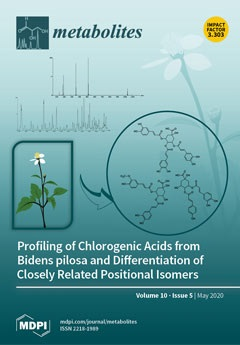The activation of the Ras signaling pathway is a crucial process in hepatocarcinogenesis. Till now, no reports have scrutinized the role of dynamic metabolic changes in
Ras oncogene-induced transition of the normal and precancerous liver cells to hepatocellular carcinoma in vivo. In the
[...] Read more.
The activation of the Ras signaling pathway is a crucial process in hepatocarcinogenesis. Till now, no reports have scrutinized the role of dynamic metabolic changes in
Ras oncogene-induced transition of the normal and precancerous liver cells to hepatocellular carcinoma in vivo. In the current study, we attempted a comprehensive investigation of
Hras12V transgenic mice (
Ras-Tg) by concatenating nontargeted metabolomics, transcriptomics analysis, and targeted-metabolomics incorporating [U-
13C] glucose. A total of 631 peaks were detected, out of which 555 metabolites were screened. Besides, a total of 122 differently expressed metabolites (DEMs) were identified, and they were categorized and subtyped with the help of variation tendency analysis of the normal (W), precancerous (P), and hepatocellular carcinoma (T) liver tissues. Thus, the positive or negative association between metabolites and the hepatocellular carcinoma and
Ras oncogene were identified. The bioinformatics analysis elucidated the hepatocarcinogenesis-associated significant metabolic pathways: glycolysis, mitochondrial citrate-malate shuttle, lipid biosynthesis, pentose phosphate pathway (PPP), cholesterol and bile acid biosynthesis, and glutathione metabolism. The key metabolites and enzymes identified in this analysis were further validated. Moreover, we confirmed the PPP, glycolysis, and conversion of pyruvate to cytosol acetyl-CoA by mitochondrial citrate-malate shuttle, in vivo, by incorporating [U-
13C] glucose. In summary, the current study presented the comprehensive bioinformatics analysis, depicting the
Ras oncogene-induced dynamic metabolite variations in hepatocarcinogenesis. A significant finding of our study was that the mitochondrial citrate-malate shuttle plays a crucial role in detoxification of lactic acid, maintenance of mitochondrial integrity, and enhancement of lipid biosynthesis, which, in turn, promotes hepatocarcinogenesis.
Full article






